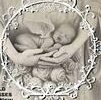Donate Wedding Dresses to Charities
Many brides choose to keep their wedding dress as a keepsake or even pass it down to their daughter, but some gowns end up sitting in closets for years before being discarded. Instead of letting your gown gather dust, donate it to one of the many meaningful charities that accept preowned dresses. The charity that receives your dress will use it to provide brides-to-be with an affordable option for their big day. Wedding dresses can be expensive, and many brides are unable to afford their dream dress due to financial hardships. By donating your dress, you can help brides have their dream wedding and create priceless memories just like you did on your special day. Donating your gown to a charity can also help you save on taxes. The organization you donate to will give you a tax receipt, which can be used to reduce your taxable income for the year. This may not be the case if you donate to a charity that is not registered with the IRS. Be sure to consult your accountant for more information about claiming your donation on your taxes. When donating your gown, be sure it is in good condition. Check it for signs of tearing or fraying and make sure there are no visible stains. A gown with significant damage will be a huge burden for the charity to repair, while minor damages can often be fixed by a seamstress before being donated. Some charities will also accept bridal accessories, such as veil, sash, and shoes. Some will only accept certain styles of gown, so be sure to check with each charity before donating. It is also a good idea to have your gown professionally cleaned before donating. Donating a dirty dress can ruin the look of other dresses, so it is important to have yours cleaned as soon as possible. The Brides Project in Michigan, for example, sells donated wedding dresses to raise money for programming for families impacted by cancer. The organization’s program includes support groups, counseling services, and nutrition workshops. Another nonprofit that outfits military and first responder brides with preowned wedding dresses is Brides Across America. The organization has a collection of over 26,000 dresses in their Operation Wedding Gown boutiques, where they are passed on to brides for free. Brides Across America also hosts two wedding gown events each year to ensure that all brides have the opportunity to experience their dream wedding. A third nonprofit that accepts wedding dresses is NICU Helping Hands, which transforms gowns into tiny burial dresses for infants that have died before their first birthday. The group has 180 seamstresses across the country who work to create these dresses for grieving parents. You can find more local options for donating your dress at Angel Gown Network Canada. The site allows you to search for an Angel Gown group near you, and each location has links to their websites. In addition to gowns, the group also accepts donations of sewing supplies such as ribbon, lace, bobby pins, buttons, fabric scissors, and pinking shears.
